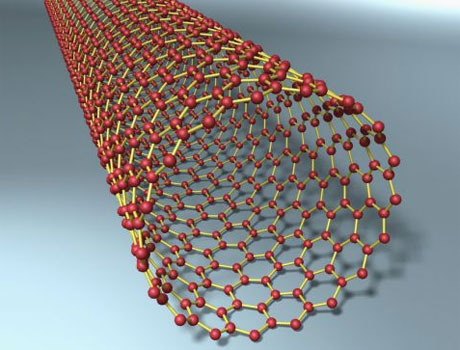teruterubozu
Member
RJT said:And actually affordable.
Really people, food prices are gonna increase a lot in the next decade. Real food will be a thing for rich people.
Unless you grow and raise yourself.
RJT said:And actually affordable.
Really people, food prices are gonna increase a lot in the next decade. Real food will be a thing for rich people.
Scrow said:quantum processing and fusion energy are the two major things that will transform civilisation drastically in a small space of 5-15 years.
MacGurcules said:I think we need to fast track a space elevator and get moving on interplanetary colonization. Do something awesome and tremendous just because it's awesome and tremendous.
i think he's saying that fusion energy will transform society completely only 5-15 years after it goes mass scaleCasp0r said:Ha ... fusion energy in the next 5-15 years?
Ha ha ... hahaahahahahha. How about the next 50-150 years. They haven't even got highly experimental reactors working properly and you think they'll start building commercial fusion plants in the next 5-15 years?
Then, unless you're rich, you should be better off selling it rather than eating it. In 50 years, we'll all be eating artificial food.teruterubozu said:Unless you grow and raise yourself.
He's saying once those things are proven, scalable, economical that they will advance civilization drastically in 5-15 years.Casp0r said:Ha ... fusion energy in the next 5-15 years?
scar tissue said:i think he's saying that fusion energy will transform society completely only 5-15 years after it goes mass scale
Casp0r said:You realise that the idea of interplanetary colonization is a complete and utter fantasy? Fundamentally impossible due to numerous physical constraints, finding somewhere sustainable, getting there, surviving there ... all would require numerous technological advances and numerous breakdowns of the basic physical laws of our universe.
Casp0r said:Ah ok. Still that's not going to happen. Once it's full proven and working it's going to be way to expensive to just throw out all our other plants and replace them with fusion plants.
It'll take hundreds of years to phase out fossil fuels and nuclear plants ... not 5-15 years.
ThoseDeafMutes said:I don't think you have seriously analyzed this. It requires technology greater than our own but there is absolutely nothing that is "impossible" about it. Creating space habitats, colonies on Mars, the Moon, the cloud-tops of Venus etc are all realistic goals that could easily be accomplished with technology that is only 15-25 years beyond our own. We could have a permanently manned moon colony right now if there was public willingness to stomach the huge monetary costs associated with it.
ThoseDeafMutes said:The only breakthrough necessary to make these things plausible is cheaper orbital lift - it costs thousands of dollars per kilogram to shoot stuff into space. When that's reduced to tens of dollars per kilogram, this shit will all start to happen.
fanboi said:You know... we would like need a couple for the entire planet if I understand things correctly...
If ... not when. The main problem with a space elevator is the cable material. Now coming from a materials degree ... I gotta say the chances of finding a material strong and light enough, are extremely thin if not impossible. The strongest materials we've theoretically measured can just about hold it. However making that cable without imperfections ... that's going to be damn near impossible.





Kinitari said:
We have imagine it before we can invent it.McLovin said:Kind of funny that a lot of the things we have today are sort of based on things we see in movies..
I don't think the risk is worth it... The jumps we had since the cold world ended (in computers and telecommunications) are just as big. Nanotechnology will get bigger in the near future. Worrying about a third world war isn't something we need right now.TacticalFox88 said:We need a second cold war. Seriously. The leaps made during the first one due to competion wer e just mindblowing. We went from P-51s to SR71s in sixteen years!
TacticalFox88 said:We need a second cold war. Seriously. The leaps made during the first one due to competion wer e just mindblowing. We went from P-51s to SR71s in sixteen years!
sans_pants said:how old are you? if you aren't already in your 50s theres a chance you will be able to live indefinitely
RJT said:And actually affordable.
Really people, food prices are gonna increase a lot in the next decade. Real food will be a thing for rich people.
Zaptruder said:What an asinine and ignorant view of technological progress.
While I don't doubt that war can be a potent catalyst for innovation; mother been the necessity of invention and all that, the idea that moving from P-51s to SR71s is the height of technological differences is laughable.
Compare computers from a 10-15 year time span. Much of the progress that's made is a result of prioritizing. In our modern age, we've prioritized consumer goods... because we like bling and are generally short sighted. But better than the same for military technology. While some of that stuff has trickled down to civilian applications, you get more civilian technological innovations from the same dollar value, by focusing on just civilian technological innovations.
Also, there's most certainly been a fair amount of military propogandizing and conflating of technologies that were available during the time that were used effectively in military applications, and technologies that were purposefully researched for military applications that have since trickled down into the general population.
It was the U.S. Army's need to quickly calculate artillery firing tables during World War II that led to the development of the Electronic and Numerical Integrator and Calculator (ENIAC) in 1945. ENIAC is considered the first modern computer because of its all-electronic, digital design. ENIAC was two thousand times faster than its contemporary, the Mark I computer, yet cost the same to build. The next digital computer, the Whirlwind, was originally funded by the Navy in 1944 to provide flight simulation for training and for gathering pilot-airplane interaction data. Completed in 1954 with Air Force funding, the Whirlwind project was the most lengthy and expensive of its time. Its final product embodied several critical technical advances, including high-speed electronics, vacuum-tube checking methods that greatly improved reliability, graphical displays using cathode ray tubes, and, most significantly, magnetic-core memory. Out of the Whirlwind project came the Air Force's Semi-Automatic Ground Environment (SAGE) system in the late 1950s. SAGE was a system of computers, radar, aircraft, telephone and radio communications, and ships that provided defense in case of an air attack. SAGE embodied yet more advances in computer technology. Its ability to interact with humans through graphic displays was probably its most important novel feature.
In the 1960s, ARPAnet, precursor of the Internet, grew out of research and development efforts led by the IPTO in timesharing and networking. The first major contracts the IPTO funded were for research and development of timesharing systems (systems enabling more than one user to use a single computer simultaneously). Once several timesharing systems were in place, the IPTO directed the linking of those timesharing systems into a network called ARPAnet. ARPAnet was in place by 1973. The impact it had on computer technology cannot be underestimated. Both the military and the corporate world came to benefit greatly from timesharing and networking, as these technologies allowed expensive computer resources to be used efficiently and remotely.
In many cases the military's readiness to purchase new high technologies has been more important than its direct funding of research. The integrated circuit (semiconductor chip) that made small, inexpensive computers possible was developed entirely without military funding, but almost as soon as chips were invented the Air Force decided to use them in its Minuteman II ballistic missile. The Air Force ordered many semiconductor chips, providing chip companies with the capital necessary to set up manufacturing sites that soon were supplying commercial as well as military markets.
While many of the military's investments in computer science R&D have led quickly and directly to technologies with military and civilian applications, the military has funded some areas of computer research that have taken much longer to produce viable applications. Two of these areas are artificial intelligence (AI) and molecular electronics (molectronics). DARPA began funding research in AI in the early 1960s. That research did not produce commercial products until the early 1980s. As early as 1959, even before the integrated circuit was invented, the Air Force funded research in molectronics. Little progress was made, and the project was dropped in the early 1960s. As other technologies have advanced and the limits of the miniaturization of silicon chips seems to be approaching, interest in molectronics has revived, with DARPA currently funding research in the field. DARPA researchers anticipate molectronic devices that will not only control the flow of electricity at the molecular level but will also assemble themselves.
DARPA remains the major source of military funding of computer science R&D. Some areas of research DARPA currently funds are:
Spintronics. Electronics based on the spin, rather than the charge, of electrons.
Information assurance and survivability. Methods to ensure that military data is not compromised by enemy intrusion or technical failure.
Agent-based computing. Software that is "aware" of its environment, proactive, and self-correcting.
Dynamic databases. Databases that translate large amounts of information about ground targets in real time into a format that tactical commanders can read and base combat decisions on.
ThoseDeafMutes said:OP was much smaller than I thought it would be. Practically no detail on any of the topics.
---------------------------------------------------------------------------------------------------
Artificial Intelligence:
What?
Artificial Intelligence is the study of intelligence and how to create it. The definition of "intelligence" is very ambiguous, and experts in the field often disagree about how to define it.
Why?
The replication of intelligence in artificial systems allows us to "outsource thinking". They can perform repetitive or undesirable tasks that require thinking. When they can do things better and faster than humans can, it frees up the humans to do other tasks that require their attention.
The end-state of A.I. research is the creation of "Strong A.I.", which is an intelligence that can do everything a human can do, better than a human can do it. This will inevitably transform society, with humans no-longer being required perform any tasks in particular unless they want to for some reason (or do not trust an A.I. in the role, i.e. running countries).
When?
Now! Artificial Intelligence has produced hundreds of useful applications we use in every-day life, whether we realize it or not. The most visible is search-engine technology such as Google. Other applications include automated natural language translation tools, computer opponents in video games, automated design of objects using evolutionary or genetic algorithms, inventory management tools for stores, GPS navigation, facial recognition software, voice recognition software and much more. These are seldom recognized as "Artificial Intelligence" by the general public for several reasons; the public is unfamiliar with the field, the public doesn't understand how it works, and they are never marketed as artificial intelligence. Usually, A.I. applications are just considered software when they are brought to market because there is a stigma associated with the term A.I. in business circles.
From the Stottler Henke A.I. Glossary:
A.I. software is already better than humans at performing many specific tasks, the game of chess for example. It will however be a long time before we realize Strong A.I. or anything approaching it, perhaps 30 years or more. Optimistic estimates based on Moore's law and naive analysis argue for Strong A.I. to appear in the 2020's, although this is a questionable date.
Sir Garbageman said:Explain por favor.
Uchip said:Get reading for a Grey's Anatomy episode
what?
Newswise In a paper published in the April 25 early online edition of the Proceedings of the National Academy of Sciences, researchers at the University of California, San Diego School of Medicine, the Gladstone Institutes in San Francisco and colleagues report a game-changing advance in stem cell science: the creation of long-term, self-renewing, primitive neural precursor cells from human embryonic stem cells (hESCs) that can be directed to become many types of neuron without increased risk of tumor formation.
By adding other chemicals, the scientists are able to then direct the precursor cells to differentiate into different types of mature neurons, which means you can explore potential clinical applications for a wide range of neurodegenerative diseases, said Zhang. You can generate neurons for specific conditions like amyotrophic lateral sclerosis (ALS or Lou Gehrigs disease), Parkinsons disease or, in the case of my particular research area, eye-specific neurons that are lost in macular degeneration, retinitis pigmentosa or glaucoma.
wasn't pretty much every kind of modern technology, from the calculator to the internet and robots primarily invented for military use?Casp0r said:What are you talking about ...
A hell of a lot of technology was born from military funding ...
OliveJuice said:
The production of Nanotubes, which would lead to:
The space elevator

Then, with the help of Antimatter rockets

We could have space colonies

And from there, of course we would have

These are far in the future though, for the near future, I'm more interested in better batteries, and quantum computing.
I love Ray and The Age of Spiritual Machines was a great read, but I don't buy into the whole immortality thing. At least, not in the sense of transferring your brain to a computer.scar tissue said:this is the best part
i'm currently reading "the singularity is near" by ray kurzweil and i can't believe i might actually get to be immortal
...a god
...my own legacy
*evil laugh*





What? You do realize that most technologicaal advancements START from War. If you find a military use (and you certainly will and can) it will advance far faster than letting the "private" sector handle it. Add that to some international competition? Shiiiiiit.Zaptruder said:What an asinine and ignorant view of technological progress.
While I don't doubt that war can be a potent catalyst for innovation; mother been the necessity of invention and all that, the idea that moving from P-51s to SR71s is the height of technological differences is laughable.
Compare computers from a 10-15 year time span. Much of the progress that's made is a result of prioritizing. In our modern age, we've prioritized consumer goods... because we like bling and are generally short sighted. But better than the same for military technology. While some of that stuff has trickled down to civilian applications, you get more civilian technological innovations from the same dollar value, by focusing on just civilian technological innovations.
Also, there's most certainly been a fair amount of military propogandizing and conflating of technologies that were available during the time that were used effectively in military applications, and technologies that were purposefully researched for military applications that have since trickled down into the general population.
Vyer said:That robot military dog thing is terrifying.
And artificial meat reminds me of Better Off Ted. I'm one of three people that actually watched that show, I guess.
I think this is actually pretty cool. When the raw material deposits run out, we will be forced to properly recycle everything. We'd get a macro system that would inch closer and closer to the systems we find in nature. We do need to find find a way to diminish the population growth. Too many people might make it unsustainable to live on this planet.StuKen said:The culture of conspicuous consumption and constant strive for exponential growth just to stand still means that even if we do attain the wildest technological advances imaginable we wont have anything left to build them with. Look at this and weep for your future.
http://kauaian.net/blog/wp-content/themes/default/images/sushi/mineral_audit.jpg
Casp0r said:Colonys on Mars, the Moon ... the <shakes head> cloud tops of venus ... they won't happen.
Scientific research facilities ... sure. I never said they couldn't. However creating a sustainable human colony on these dead rocks is not only near impossible ... it's also highly pointless.
Even a research facilities are a little pointless, robots are cheaper, more durable and will eventually do just as much as humans can.
If ... not when. The main problem with a space elevator is the cable material. Now coming from a materials degree ... I gotta say the chances of finding a material strong and light enough, are extremely thin if not impossible. The strongest materials we've theoretically measured can just about hold it. However making that cable without imperfections ... that's going to be damn near impossible.
Then once we finally get a cable that can hold it's own weight ... we have to then push way past that so we can actually send stuff up it ... and not just a few grams.
It's extremely tricky and I doubt we'll ever see it working. I'm not happy about this, it's just fact.
friskykillface said:teleporters please, just to see all what the effects will have on all forms of travel, hopefully RIP to airlines
more advancements in stem cell research
that movie "the island" had a good idea in making clones for body parts and organs, lol wouldn't be surprised if that happened.
friskykillface said:teleporters please, just to see all what the effects will have on all forms of travel, hopefully RIP to airlines
